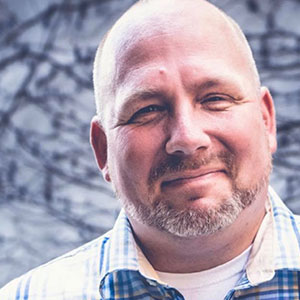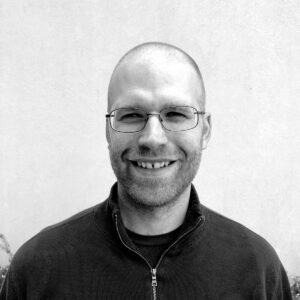








If you’ve followed The Futur for any length of time, you’ve heard them preach the importance of Creative Strategy. Whether you call it “Strategy” or Discovery, whether you offer it as a stand-alone product or part of your other deliverables, it is an essential part of doing creative work effectively.In this post, we have compiled top creative strategy tips from 9 Futur Pro Group members. The post is structured to cover more introductory topics first ( in case you are just learning about strategy) and then progress into more advanced creative strategy and beyond.
Strategy Vs. Tactics: Understand and Implement for Success.
Written by Frankie Margotta
 If you’re a creative professional, chances are high that you’ve been exposed to the concept of offering strategy. It’s also likely that you may have found it challenging to understand, somewhat elusive and difficult to implement—and you’d be totally justified.As a creative problem solver, there’s an immense pressure to offer strategy in some capacity, yet hardly a consistent definition on what that actually is, let alone how to deliver it. Efforts and research to gain clarity often lead to more confusion and, suddenly, this thing that’s supposed to solve problems is actually causing a few of its own. Sound familiar?
If you’re a creative professional, chances are high that you’ve been exposed to the concept of offering strategy. It’s also likely that you may have found it challenging to understand, somewhat elusive and difficult to implement—and you’d be totally justified.As a creative problem solver, there’s an immense pressure to offer strategy in some capacity, yet hardly a consistent definition on what that actually is, let alone how to deliver it. Efforts and research to gain clarity often lead to more confusion and, suddenly, this thing that’s supposed to solve problems is actually causing a few of its own. Sound familiar?
Simply put, strategy is a plan, in relation to a desired objective or goal. This differs from tactics, which are the ways that we decide to execute our plan. At its core, strategy is what drives our tactical solutions and isn’t meant to be an afterthought. It requires you to remove yourself completely from any pre-determined solutions and look at your goal holistically, openly and objectively.
So why then does strategy feel like a “forced fit” for some? Well, a major contributor to this friction point is that—knowingly or unknowingly—many creatives are attempting to implement their plan after deciding on how they intend to solve the problem. Within the context of pure strategy, this is a fundamental flaw and typically leads to false positives, wasted effort and a higher probability of failure.
Now, you may be thinking “but where does that leave the tactical specialist—the person whose years of expertise remain within a particular skill or solution? Are they condemned from using strategy because their tactics have already been determined?” Absolutely not. The approach of working backward from the answer remains strategic and is still valuable in its own right. The integral difference lies in the fact that it is natively tied to a pre-determined solution or deliverable.
The key to success is knowing which approach best suits your strengths. Both approaches can be used effectively, they just shouldn’t be used interchangeably.
Frankie Margotta | Creative Strategist + Copywriter
Instagram: www.instagram.com/frankie.margotta (@frankie.margotta) Facebook: facebook.com/frank.margotta LinkedIn: https://www.linkedin.com/in/fmargotta/ Slack: https://frankiemargotta.slack.com
“You Can’t See the Forest for the Trees”: Why Pre-Strategy Work is Vital to the Success of Creative Strategy
Written by Mo Ismail
 Many of us creatives are familiar with strategy and know its power in helping brands and businesses alike fulfill their fullest potential both creatively and professionally. However, as strategy leaders, at times, we are too concerned with making sure we check strategy items off of our list, the trees – user profiles (✔), user journey (✔), company story (✔) – rather than achieving the core essence of strategy – seeing the problem, clarifying the problem, and solving it, the forest.
Many of us creatives are familiar with strategy and know its power in helping brands and businesses alike fulfill their fullest potential both creatively and professionally. However, as strategy leaders, at times, we are too concerned with making sure we check strategy items off of our list, the trees – user profiles (✔), user journey (✔), company story (✔) – rather than achieving the core essence of strategy – seeing the problem, clarifying the problem, and solving it, the forest.
To effectively see the forest, understand its layout, and in turn better its upkeep; we must fly high above it to scope what’s really happening. This allows us to decipher what needs to be removed, what needs to stay, and what needs to be added throughout the terrain for the vitality of the forest. To accomplish this feat, even before we delve into running strategy, we must deploy what I like to call pre-strategy – a lay of the land, if you will, or as some like to call it the 30k Foot View.
Why? Because without it we don’t have a clear holistic viewpoint of the company to guide our selection for the highest impact strategic tools we need to use to solve the relative problem at hand. In sum, let us not get wrapped up in all of the trees surrounding our immediate parameter (our strategic tactics) before we do our due diligence to gain a vantage point for the forest itself (the problem we aim to solve).
“Hey, Hi, Hello! I go by the name Moismai!!”
Mo Ismail, is an award winning and published Communication Studies Master scholar, public speaker, and the Managing Director of MOCs, where he oversees the strategic and operational direction of the agency.Through his scholarship in Psychology and Communication Studies, and his passion for creative and business, Mo’s focus is to bridge the gap between creative and communication, by helping his viewers and clients clarify their message to understand and effectively reach their audience using the right creative medium.
“Personally, I channel my creativity through teaching, writing, photography, and videography to communicate my truth and help creatives in unlocking and actualizing their own.” – www.mocs.media
Discovery should follow a structured framework
Written by Sean Tambagahan
 Nothing’s more confusing and frustrating for a client during Discovery than when the facilitator is all over the place. If clients have no idea where you’re going, why you’re asking the questions you’re asking, or how the exercises you’re running relate to the project they hired you for, they’ll mentally check out and you’ll miss out on valuable insights.From the onset of a Discovery session I let clients know that for us to ______ (fill in the blank with whatever project they’ve asked Butler to do) effectively, I like to learn about every aspect of their brand. This helps us confidently land on a solution that will achieve the goals they hired us for. At Butler, we have about 15-20 different exercises we could potentially run clients through (depending on the client and project), all of which fall under four primary categories:
Nothing’s more confusing and frustrating for a client during Discovery than when the facilitator is all over the place. If clients have no idea where you’re going, why you’re asking the questions you’re asking, or how the exercises you’re running relate to the project they hired you for, they’ll mentally check out and you’ll miss out on valuable insights.From the onset of a Discovery session I let clients know that for us to ______ (fill in the blank with whatever project they’ve asked Butler to do) effectively, I like to learn about every aspect of their brand. This helps us confidently land on a solution that will achieve the goals they hired us for. At Butler, we have about 15-20 different exercises we could potentially run clients through (depending on the client and project), all of which fall under four primary categories:
- The Business
- The Brand
- The Users
- The Marketing
During the introduction I let clients know that we’ll be going through a series of questions and exercises that help us learn about each of those aspects. The exercises are typically preselected before the session, but I often add or omit exercises on-the-fly depending on how the Discovery session plays out in real-time.
I’ve found that developing a structured framework for Discovery (and letting clients know about it from the beginning), has increased engagement, decreased skepticism, and solidified confidence in our process.
Sean Tambagahan is the CEO and Brand Strategist at Butler Branding, a full-service branding and marketing agency based out of Central California. He is also the creator of the Butler Box – a curriculum and bundle that includes everything you need to level up and run your creative agency.
Mining Gold with Active Listening
Written by Dave Ko
 Throughout my whole life, my dad has always been offering unsolicited life advice. It wasn’t until I was mid-way through my teens that I realized what he was telling my brother and I was full of universal wisdom. One of the things he kept telling us is that we have two ears, two eyes and only one mouth by divine design. What he was telling us, of course, was that we should be listening and observing much more than we should be talking. In other words, “The wise watch and listen, while the fool speaks endlessly.” I’m realizing that this bit of wisdom is more multilayered than I originally thought. When solving a problem, it always starts with listening. Without knowing exactly what the problem is, at best you’ll be guessing how to solve it. Active listening requires us to try and put away as many of our biases and assumptions as possible so that we don’t approach every problem with the same solution. In other words, if the only tool you have is a hammer, everything starts looking like a nail. Listening intently also builds rapport and trust with your clients because they discover that you really have their best interest in mind. Finally listening well, leads to great questions. And great questions are the key to mining the gold in strategic discovery sessions. This is what will cement you as an expert in the minds of your clients.
Throughout my whole life, my dad has always been offering unsolicited life advice. It wasn’t until I was mid-way through my teens that I realized what he was telling my brother and I was full of universal wisdom. One of the things he kept telling us is that we have two ears, two eyes and only one mouth by divine design. What he was telling us, of course, was that we should be listening and observing much more than we should be talking. In other words, “The wise watch and listen, while the fool speaks endlessly.” I’m realizing that this bit of wisdom is more multilayered than I originally thought. When solving a problem, it always starts with listening. Without knowing exactly what the problem is, at best you’ll be guessing how to solve it. Active listening requires us to try and put away as many of our biases and assumptions as possible so that we don’t approach every problem with the same solution. In other words, if the only tool you have is a hammer, everything starts looking like a nail. Listening intently also builds rapport and trust with your clients because they discover that you really have their best interest in mind. Finally listening well, leads to great questions. And great questions are the key to mining the gold in strategic discovery sessions. This is what will cement you as an expert in the minds of your clients.
So in your next discovery and strategy session lead with active listening and pay careful attention to what your clients are and aren’t saying, so you can deliver the best strategic solution.
Dave Ko is Creative Director and co-founder of Akomplis Studios, a strategy led motion design studio in Vancouver, Canada. With over 20 years of experience he has worked with global brands like Lululemon, 7Eleven and Fox Sports.
Why Don’t You Just Send a Questionnaire?
Written by Rachel Nichols
 Regardless of what framework you use to conduct a creative strategy or discovery session with your clients, it is important to remember that you are a facilitator of the process.If you are simply asking questions, recording the answers, and generally following a script, wouldn’t it be more efficient to send a thorough questionnaire?
Regardless of what framework you use to conduct a creative strategy or discovery session with your clients, it is important to remember that you are a facilitator of the process.If you are simply asking questions, recording the answers, and generally following a script, wouldn’t it be more efficient to send a thorough questionnaire?
If you don’t feel like much would be lost if you just sent a document in your place, there is a powerful tool not being utilized.
That tool is your ability to manage the flow of the session through facilitation.
You have the ability and the job of managing the energy in the room, is it scattered and frenzied? Is it low and apathetic?
You can encourage focus and clarity, as well as constructive and excited energy by paying attention and leading the meeting.
For example: Listen for their hesitation, repeat back what you heard and ask for clarity on their meaning. If they say “fun”, take a moment and ask them to describe what they picture when they say that word.
By employing active listening and being completely present you are more likely to inspire a moment of clarity. Those moments are what will stick in their memory, reinforcing your value to them over and over again.
Rachel Nichols is the founder of Lucere Design and brand strategist who lives to create clear communication and connection between brands and the customers who love them.
Listening and Authenticity Help You Form Lasting Connections
Written by Diane Gibbs

Honing my listening skills has been one of the most critical ingredients in the success of my business. Connected to this is my ability to feel excited and authentically show enthusiasm about the possibilities for growth and the success of my clients.
Practice fine-tuning your skills for engaging people in conversation, finding connections, being curious and authentically interested in people, their stories, and their businesses. You’ll be rewarded with a loyal and ever-expanding circle of connections, followers, fans, and friends.
Here are my 5 Tips for Being a Great Listener:
- Be genuinely curious and interested
- Learn to ask open-ended questions and allow lots of space for the answers
- Wait until the other person is finished speaking before you respond
- Practice letting the conversation be all about the other person
- Be authentically excited for their potential growth and success
Here are my 3 Best Conversation Starters which Result in Real Connections:
- Ask about their pain points, connect with them by sharing how you struggle with something similar or have struggled. Start with vulnerability and honesty.
- Ask about their company, and what they do. Don’t use industry jargon, speak plainly, ask questions especially when you don’t understand. When they explain something difficult try and put it in your own words back to them to see if you understand.
- Find areas of connection and interest. Ask questions about how they spend their time. They will most likely share what is most important to them: business, family, hobbies, etc.
Diane Gibbs has been a designer for over 20 years and an entrepreneur, running her own design firm, Little Bird Communications, since 2002. She has won over 24 national and international design awards. She coaches professional design entrepreneurs from all over the United States, guiding them in growing their businesses. Diane is a genius at connecting with others and is known for pairing every new contact she meets with someone from her brain’s rolodex who can help them. Diane has been seen on and asked to be a regular contributor on the popular YouTube channel, The Futur with Chris Do. She has been a guest on numerous other podcasts and has spoken at three national conferences, emceed regional AIGA events, and facilitated workshops.Diane has been teaching graphic design at the University of South Alabama since 2003. In May of 2012, to keep herself inspired and expand her network with other creatives, Diane started a live, weekly, video podcast called Design Recharge where she interviews creatives and industry leaders from around the globe. Diane is passionate about helping creatives grow their businesses and serves as a recruiter/matchmaker for budding, creative entrepreneurs by connecting them with emerging designers who have recently joined the industry through her side project, Recruiting Creatives.
How Strategy Can Create A Lifetime of Trust
Written by Gary Morris
 The top revenue-producing web design agencies know and understand the importance of incorporating strategy into the web design process. Rushing to design without taking the opportunity to clarify user goals, experiences, company culture, user profiles, and a myriad of other necessary points of clarification leads to generic web sites that can be slapped on any business.
The top revenue-producing web design agencies know and understand the importance of incorporating strategy into the web design process. Rushing to design without taking the opportunity to clarify user goals, experiences, company culture, user profiles, and a myriad of other necessary points of clarification leads to generic web sites that can be slapped on any business.
Fighting Generic-isim
You’re not generic, and either are your clients. Since most of you reading this have already learned the value of adding strategy to your creative process, it’s time we talk about fighting against the normative approach to strategy.
What is the normative approach? The normative approach is looking at strategy as a means to an end. It’s linear. But if you’ve learned strategy from the right people, you’ve learned that it’s “not a process but a framework driven by philosophy.”
Fighting Blindspots
What is often missed is that wrapped up in the philosophical approach is a golden ticket to the hearts, minds, motivation, and business make-up of your clients.
Strategy, when thought of clearly, can quickly empower you to create so much value that is so irresistible you settle your position as a permanent trusted advisor. And that, my friends, is right where you want to be.
My main thrust in this short article is that you’ve got to simply look at strategy differently, it’s the foundational, preeminent opportunity to enter into your clients’ world in ways that you would have never so easily entered (with permission!)… so use it wisely.
Gary Morris is a business strategist and digital marketing expert. Gary has helped numerous businesses triple their yearly revenue. Gary is the founder and President of Grafted-In LLC, a digital marketing agency that manages over a million users per month.
Your Best Strategy is Dead Without Accurate Data
Written by Matt Cilderman
 You can have the best plans, best implementation, and best people, but if you need to be headed west and you are headed east due to bad data…nothing can save you. You will waste time and money…and maybe even ruin your business or reputation along the way.Everyone I know who offers creative strategy for clients (whether for marketing, design, product development, etc.), uses an exercise to help identify the business’s current and/or ideal user.
You can have the best plans, best implementation, and best people, but if you need to be headed west and you are headed east due to bad data…nothing can save you. You will waste time and money…and maybe even ruin your business or reputation along the way.Everyone I know who offers creative strategy for clients (whether for marketing, design, product development, etc.), uses an exercise to help identify the business’s current and/or ideal user.
What if the business doesn’t understand their current or ideal user? If you target the wrong type of person from the beginning, there isn’t much chance of success.
This is why we often start the engagement with a Marketing and Branding Audit where we examine the businesses’s marketing channels and analytics data (from their website, email, Facebook, etc.). This allows us to compare both sets of information to make sure we have accurate data to base our strategies on.
So, remember to include analytics data in your creative strategy!
Matt Cilderman is the author of “Blogging for Creative Entrepreneurs: A Guide to User Experience, Search Engine Optimization, and Content Creation”, which was published by The Futur last spring.
He is a noted speaker and educator with a master’s degree in the science of educational technology.
Matt also owns Cilderman Solutions, a digital marketing agency in Bergen County, NJ, that focuses on helping your customers find you through strategy and inbound marketing.
So you want to be a strategist?
Written by Bob Bonniol
 Here a critical piece of information: Strategy is a tool and application that goes beyond the brand, and into every business function.It is easy to think of strategy as a development stage of creating brand stories and assets. The reality is that strategy is a key business tool applied to virtually every process of business. From product development, to marketing, to supply chain, strategy provides the critical context to drive productive decision making.
Here a critical piece of information: Strategy is a tool and application that goes beyond the brand, and into every business function.It is easy to think of strategy as a development stage of creating brand stories and assets. The reality is that strategy is a key business tool applied to virtually every process of business. From product development, to marketing, to supply chain, strategy provides the critical context to drive productive decision making.
At it’s highest level, companies like Deloitte, McKinsey, and the Boston Group use strategy to create business transformations in the C-Suites of the Fortune 500 companies. Companies like this apply the strategic lens to inform and drive decision making at the highest level. Intensely data driven, and often using proprietary measurement tools, the strategy deployed at this level is about using math to meet intuition, modeling potential outcomes, and deploying approaches that are tested, adjusted, and iterated.
These strategists don’t rent space in their brain to any other task or deliverable. There is no hyphen in their job title.
Strategy at this level is a hundred billion dollar business.
As we journey toward the messy middle of strategy, we find the sprawling agency networks using strategy to drive the creative underpinnings of digital marketing campaigns, televised advertising, and experiential brand activations. Each of these deliverables require the same fundamental questions of “who is this for”, and what frame best delivers to their interest and priorities. The model here looks much like many brand strategy systems – the functions are similar. The takeaway here is this: If you aspire to practice strategy, and have begun with brand strategy, the marketplace for your skills is much broader than you think.And a final nugget… With the proliferation of augmented reality and merged reality experience in every day architecture all around us, the channels for storytelling and marketing are going to explode 100-fold. And with it, the application of strategy.
Strategy goes far beyond the brand. And the need for strategic expertise is about to become a huge growth market.
Bob Bonniol is an Emmy Award winning Creative Director, Producer, and Designer. In his practice, he is fortunate to work with companies like Walt Disney, Lucasfilm, General Motors, NBCUniversal, Alibaba, and Amazon to create compelling immersive experiences for broadcast, brand activations, and large scale entertainment. You can find more of his musings on process and creative leadership at www.bonniol.com.
If you’ve enjoyed this post, make sure to subscribe to our email list for more information on marketing and strategy.
